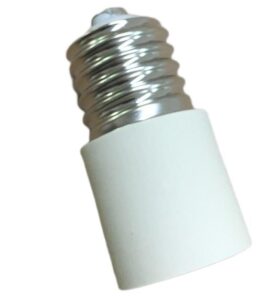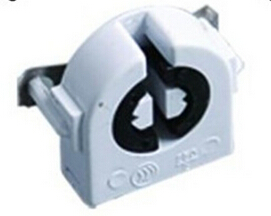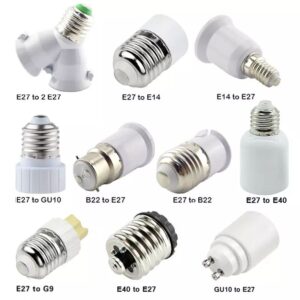Yes, a 100W bulb can safely be used with a 660W-rated outlet as long as the voltage is also compatible.
The lamp socket is rated to handle up to 660W, so a 100W bulb is well within its capacity.
Let’s go deeper into how the wattage of the socket affects the bulbs you can use.

Can you use a 60W bulb in a 660W socket?
Yes, you can safely use a 60W bulb in a 660W socket. The wattage rating on the socket indicates the maximum power it can handle, not a requirement for how much power must be used. A 60W bulb draws significantly less power than the socket’s maximum capacity, making it safe for use. In fact, using a lower-wattage bulb helps to avoid any risk of overheating or damaging the socket, as it won’t push the fixture close to its limit.
Sockets rated for higher wattages, such as 660W, are commonly found in heavy-duty lighting fixtures. These sockets are designed to support a variety of bulb wattages, offering more flexibility in bulb selection without compromising safety.
What kind of bulb does a 660W 250V socket take?
A 660W 250V socket is a versatile, high-capacity socket commonly used in industrial or heavy-duty lighting fixtures. It can handle various types of bulbs, including incandescent, halogen, and high-wattage LED bulbs, as long as the wattage does not exceed 660W and the voltage matches the 250V rating. This type of socket is ideal for applications where high-intensity lighting is required, such as floodlights, workshop lighting, or commercial settings.
To ensure compatibility, always check the bulb packaging for voltage and wattage specifications. For example, you can use 100W, 200W, or even 500W bulbs, as long as they match the 250V socket rating.

Can I put a 100 watt bulb in a 60 watt socket?
No, you should not put a 100W bulb in a 60W-rated socket. A 60W socket is designed to handle a maximum of 60 watts, so using a 100W bulb exceeds the socket’s capacity. This can cause overheating, melting, or even a fire hazard due to the excessive heat and current load. The socket may not be able to safely dissipate the heat generated by a higher-wattage bulb.
Always follow the manufacturer’s recommended wattage limits for both bulbs and sockets to avoid potential safety risks.
What is the difference between 100W and 60W bulbs?
The primary difference between 100W and 60W bulbs is the amount of power they consume and the amount of light they produce. A 100W incandescent bulb uses more energy and emits more light (measured in lumens) than a 60W bulb. Typically, a 100W incandescent bulb produces around 1600 lumens, while a 60W incandescent bulb produces about 800 lumens. The higher the wattage, the more energy the bulb uses, and the more heat it generates.
For LED bulbs, the comparison shifts. A 100W-equivalent LED bulb consumes only about 15-20 watts of power but provides the same brightness as a 100W incandescent bulb. LEDs are much more energy-efficient, making it possible to get high brightness levels without using excessive power.
Can I use a 100W equal LED bulb in a 40W socket?
No, it is not advisable to use a 100W-equivalent LED bulb in a socket rated for 40W. While LED bulbs consume significantly less power than incandescent bulbs (for instance, a 100W-equivalent LED might only use 15-20 watts), the concern lies in heat generation. Some LED bulbs, particularly high-brightness models, still produce a significant amount of heat, especially in enclosed fixtures or sockets not rated for that wattage.
If a 40W socket is designed for lower wattage, using a higher-rated bulb could still cause the socket to overheat, leading to potential damage or fire hazards. Always follow the wattage recommendations for both bulbs and fixtures.

Is it safe to use higher wattage bulbs?
Using higher wattage bulbs than what the socket is rated for is unsafe. It can lead to overheating, melting of the socket components, and increased risk of fire. Higher wattage bulbs draw more current, producing more heat, which can cause electrical components to degrade faster or fail entirely. In addition to the risk of physical damage to the socket and wiring, there is also a heightened risk of electrical shock or short circuits when wattage limits are exceeded.
To maintain safety and performance, always use bulbs that match the wattage and voltage ratings of the socket or fixture. If more brightness is needed, consider switching to energy-efficient LED bulbs that provide higher light output while consuming less power.
Conclusion
Always match your bulb’s wattage to the light socket rating.













